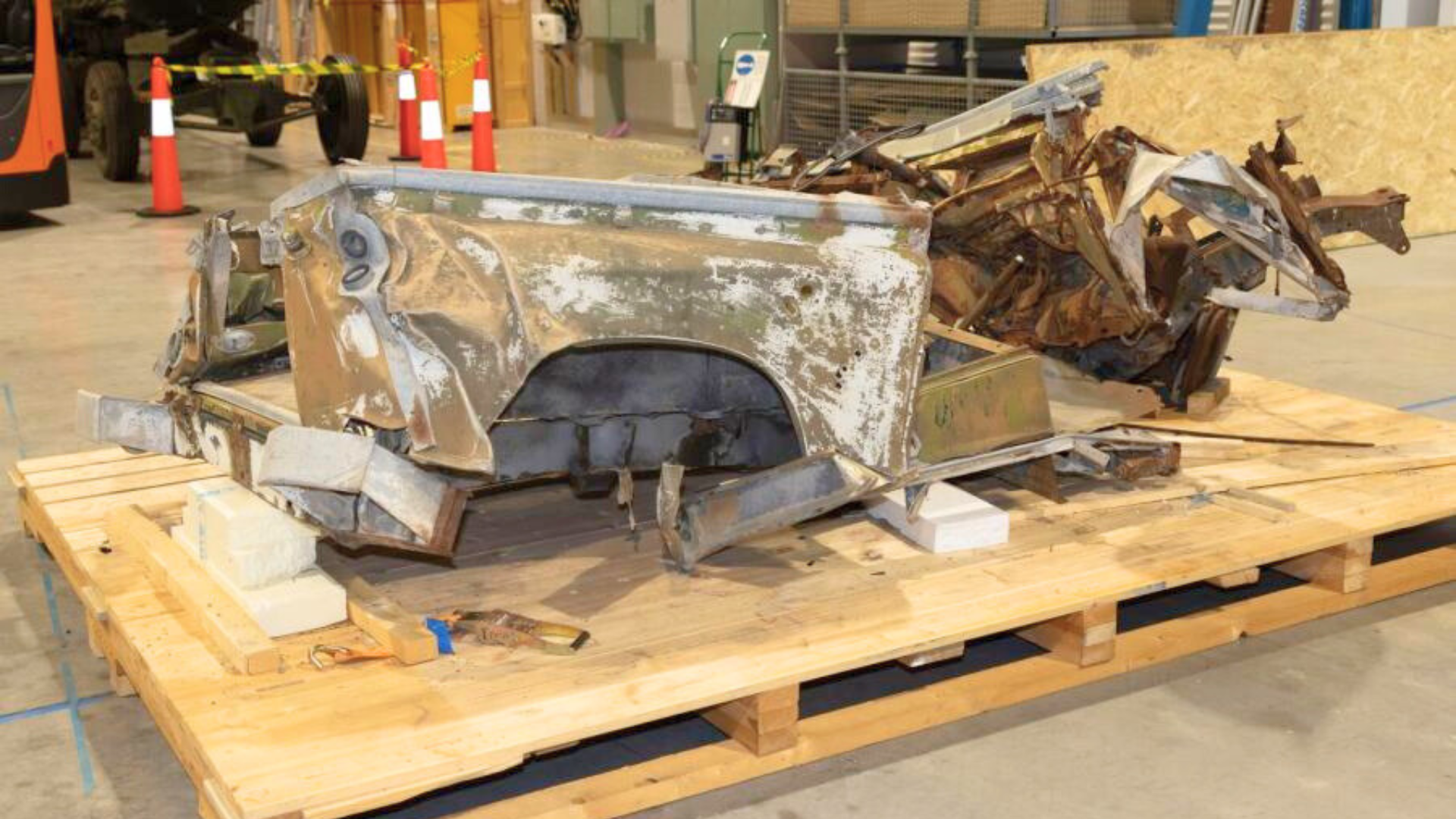A destroyed United Nations (UN) Land Rover, which lay in the buffer zone between the Greek Cypriot and Turkish-controlled areas of Cyprus for decades, has arrived at the Australian War Memorial in Canberra.
Fifty years ago, on 12 November 1974, two Australian peacekeepers were escorting a local family through the buffer zone when it struck a land mine near the Lefka–Aplici crossing. Australian peacekeeper Sergeant Ian Ward was killed, as was one of the passengers seated beside him. The other Australian peacekeeper, Senior Sergeant John Woolcott, was seriously wounded but survived, along with three children.
Wreckage of the vehicle was stranded in the buffer zone until 2016 when it was removed from the cleared mine site and transferred to the UN Protected Area. Australian War Memorial Director Matt Anderson travelled to Cyprus in March 2024 and, with the assistance of the Australian High Commissioner to the Republic of Cyprus Fiona McKergow, successfully advocated for the vehicle to be transferred to the Memorial in Canberra.
“The Australian War Memorial is grateful for the co-operation of the United Nations, the Australian Defence Force and the Government of Cyprus in facilitating the transfer of this important artefact to the Memorial,” Matt Anderson said. “The sacrifice of Sergeant Ian Ward is critical to our understanding of the hazardous nature of Australian peacekeeping operations.”
The Land Rover will be displayed in the new Australian Peacekeeping: 1947 to today gallery currently under construction as part of the new Anzac Hall at the Australian War Memorial.
Melissa Cadden, Senior Curator for the Memorial’s new gallery, said that the vehicle has been acquired as the centrepiece of the new exhibition.
“The vehicle is a symbol of the sacrifices made by Australian peacekeepers,” she said. “It is also a poignant reminder that we not only deploy the ADF to conflict zones around the world but also police and public servants.”
Sergeant Ian Ward was a member of the NSW police force. He was seconded to the Commonwealth Police (now Australian Federal Police) as a member of the 11th Australian Police Contingent to Cyprus. He was part of a UN peacekeeping force maintaining peace on the divided island.
The Australian Peacekeeping: 1947 to today gallery recognises all of Australia’s peacekeeping operations in a single gallery. It will also feature operations in East Timor, Bougainville, Solomon Islands, Cambodia, Rwanda, and Somalia, among many others.
“Australians have been deployed in peacekeeping operations every day since 1947,” Matt Anderson said. “The Development of the Peacekeeping gallery has given us the opportunity to remember not only those who died in the defence of Australia, but in the pursuit of peace all over the world.”
The Australian Peacekeeping: 1947 to today gallery will open in early 2026 in the new Anzac Hall, alongside new galleries on the Middle East, Afghanistan, Iraq and Syria.
